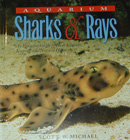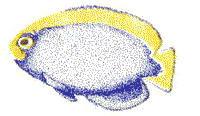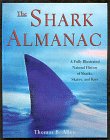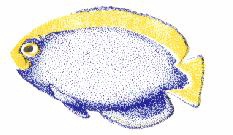Marine Fish Tank
Browse the Categories to the right, or enter a topic here
on this subject ?
Reef
Sharks and Rays
of
the World

|
|
|
SHARK ! Nothing strikes greater fear than the thought of being eaten alive by a shark. Sailors of the Old World feared many creatures from the deep blue oceans. Most of these fears were conjured up from mythical stories of sea dragons and serpents, but sharks were real. Sharks of today's modern world still hold that fear and wonder. Whether it be a 'macho thing' or just the awe and splendor, many a hobbyist has considered having a tank full of sharks, rays, and skates. Can one keep sharks ? Should one keep sharks ? How do you keep sharks ? As with any aquatic, or captive, pet there is the need for an understanding of that pet, its needs, and the responsibilities of its owner or caretaker. To better understand sharks and rays needs lets take a look at how they are classified. Sharks, rays, and skates belong to the sub-class of Elasmobranchii. Within that sub-class there are two divisions: Squalomorphii, the sharks, and Rajomorhii, the rays and skates. Both classes are defined as having cartilaginous skeletons, multiple gill slits, a rough skin consisting of teeth like scales, and continually growing new rows of teeth. The rays vary slightly by having a flattened body with their gill slits on their underside. The main difference between sharks, rays, and skates and their cousins, the fishes, are their senses and their bodies ability to move about. Angels, butterflies and tangs have a more complex skeleton structure allowing them far greater mobility. This is mainly due to their fins. Unlike the angels, butterflies, and tangs who use their pectoral fins for locomotion, sharks use their pectoral fins for lift. The sharks main means of locomotion is its caudal fin or tail. By sweeping its tail from side to side it creates a movement that pushes the shark forward. Rays and skates tend to use their, modified, pectoral fins for locomotion in a more odd manor, that being a form of undulation or something similar to a bird flapping its wings. Their tails are designed more so for protection. Positioned just at the base of the tail can be a stinger. These stingers quite often have short barbs and the ability to inject a painful venom. A sharks senses are extremely keen. Their sense of smell is extraordinary, as well as, their abilities to sense slight electrical fields and changes in water pressure. Positioned on the underside of a sharks snout are its nostrils. In some sharks these nostrils are designed so that water is passed through them as they swim along. In other sharks, such as bottom sharks, rays, and skates, these nostrils extend outwards in a barbel shape allowing for sensing of items within the sea bottom. Within these nostrils are highly sensitive sensory cells that are able to sense certain scents up to one-part-per-ten-billion or a scent trail from almost a mile away. Along the snout and the sides of a shark are its pit and lateral line sense organs. These organs sense the pressure waves created by other objects around them. These sense organs allow the shark to determine the movement of other creatures, or prey, and changes in water currents and depth pressure. Sharks, Rays, and Skates also have unique eye structures, starting with their placement which is either on the sides or the tops of their bodies. Hammerhead sharks have the most unusual eye placement, that being at the ends of horizontal eye stalks. This gives them, with their varying body shapes and side-to-side swimming motion, a maximum view of their surrounding area. The eyes of sharks also incorporate both Rod and Cone cells that provide low light and color sensitivity. Sharks are the refinement of millions of years of evolution. They are at the top of their food chain. If you are interested in keeping sharks, rays, or skates the following articles should be of some assistance to you; Shark Aquariums and Filtration Systems Appropriate Sharks For Aquarium Hobbyists
Visit the Aquarium Design home page
|
Acrylic aquariums, Fish Tanks, Aquarium Stands
' Build Your Aquarium On-Line '
___________________________________________
Jellyfish,
Jellyfish
Tanks and Plankton Kreisel
___________________________________________
MACNA X

![]()


Presentation DVD's
September, 27, 28 and 29, 1998
Long Beach, California








